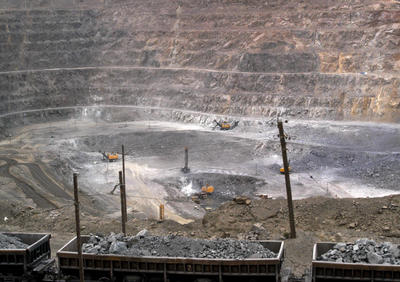The paper feeds the recent controversy about the future global supply of these critical raw materials, particularly because it states that China has just 23 per cent of the world’s rare earth minerals, rather than the 36 per cent estimated by the US.
One of the most important sections of the white paper concerns the ‘current situation of China’s rare earth industry’, and provides a comprehensive view of the industry. According to the report, China has developed a complete rare earth production system from mining to end-product utilisation that can produce over 400 varieties of rare earth products. The report also notes that China produced more than 90 per cent of the world’s total output of rare earth smelting separation products in 2011.
In a bid to address major problems in the domestic rare earth industry, such as unregulated and illegal mining, over-exploitation of resources, deterioration of the environment and rampant smuggling, the Chinese government tightened supervision over this industry last year. China continues to implement a wide-ranging industrial policy of consolidation, which has accelerated over recent years with the closure of hundreds of mines and the acquisition of many smaller producers by the country’s major mining companies. The rare earths white paper introduces a number of development targets for the industry, including stricter standards for ecological protection, pushing technological innovation, and faster steps to implement what it calls ‘the conglomerate strategy’ and structural adjustment of the industry.
These policies are well-planned decisions that are directly linked to China’s long-term objectives to become an innovative nation by 2020 and a global scientific power by 2050. China had previously set a series of short, medium and long-term development targets for a complete chain of R&D activities. These strategies have been outlined in China’s 10th Five-Year Plan (2001–05), 11th Five-Year Plan (2006–10) as well as the National Mid- and Long-Term Scientific and Technological Development Plan Guideline (2006–20).
In 2011 rare earths took on new strategic importance in China’s drive for technological leadership when, in a major policy shift, the metals were formally placed within the purview of the Ministry of Industry and Information Technology (MIIT). This ministry is the architect of China’s industrial and consolidation policies, and is in charge of shaping the development of emerging sectors that will drive demand for rare earths. In general, the MIIT is responsible for China’s mineral industry, while the Ministry of Land and Resources is responsible for mineral mining and exploitation, and the Ministry of Commerce is responsible for mineral trade. Until now rare earths had been considered a part of the resource sector. Placing rare earths under the control of MIIT will enable the Chinese government to manage and coordinate the industry in the same way it runs all other major industrial sectors.
Users of the minerals in industrialised countries now face tighter supplies and higher prices because China cut its export quotas for rare earths by 35 per cent in 2011, threatening to cause a global shortage of the minerals needed to manufacture a wide range of goods including smart phones, hybrid cars and guided missiles.
In the white paper Beijing seeks to justify its export restrictions on these critical elements and defends itself against the WTO case filed by the European Union, the US, and Japan. The paper argues that China needs to retain higher quantities or rare earths to supply its clean energy and high-tech sectors. China insists that export restrictions fit within a legal exception to WTO rules because the aim of these measures is to protect the environment. Protecting the environment is set out as a core issue in the paper and, in fact, the report goes to great length to present Chinese policies as committed to ensuring a sustainable and healthy development of the rare earths industry.
China’s dominance in the rare earth supply chain is directly related to Beijing’s consistent long-term planning. This long-term plans promote the development of a market system featuring diversified investment in fields ranging from basic science to product commercialisation and pricing according to supply and demand. The paper notes that after many years of development, China has established a relatively complete R&D system and has pioneered numerous technologies of international standard in rare earth mining, smelting and separating.
The Chinese science and technology system works on a model of top-down, state directed science and technology programs to spur developments in strategically important areas. This kind of centrally planned system has favoured applied research of direct economic and strategic significance. In turn, this has led China to become a leader in technology commercialisation because state enterprises promote links between research institutes and commercial firms. China’s conglomerates are encouraged by the government to set up their own research and technology development centres and take over public research institutes.
China’s success in the rare earth industry to date is the result of both careful thought and consideration at the highest policy making levels coupled with pragmatism, discipline and calculated risk-taking of local governments and individual companies.
Nabeel A. Mancheri is a Postdoctoral Associate at the National Institute of Advanced Studies, Bangalore.
A version of this article was first published here, on the IIT Madras China Studies Centre website.


Worth noting that of the 17 elements which make up what is known as Rare Earth Metals, not all are as important (or valuable) as others, according to expert Jack Lifton. For instance dysprosium, I came across this video http://bit.ly/NmM6zc made by London Metal Group which shows all the applications of dysprosium in modern hi-tech manufacturing.